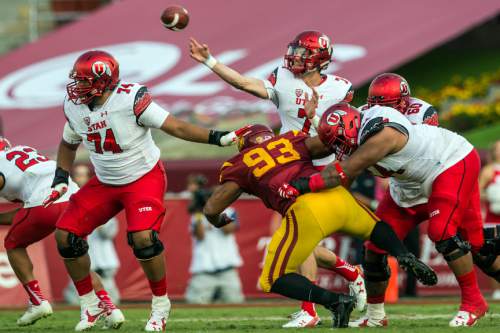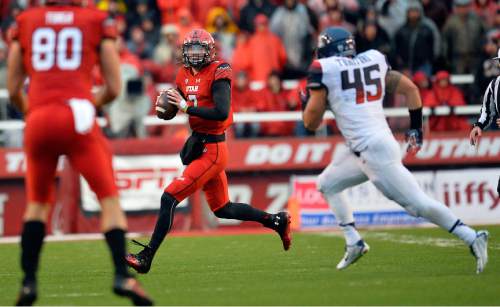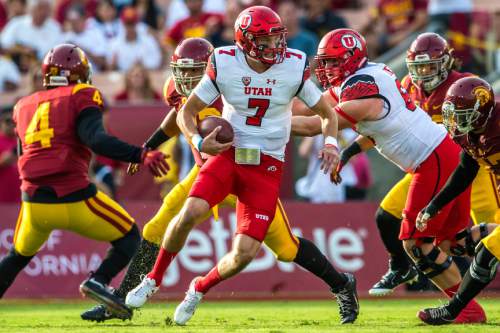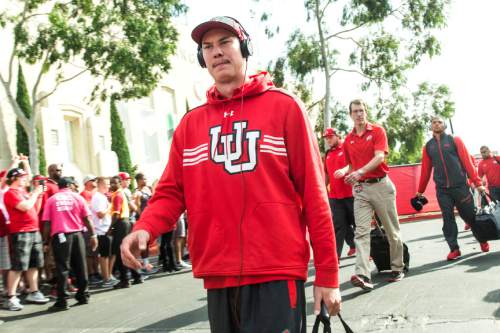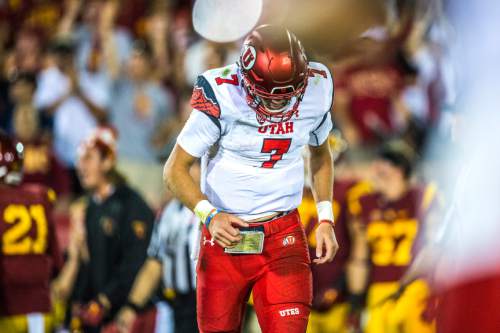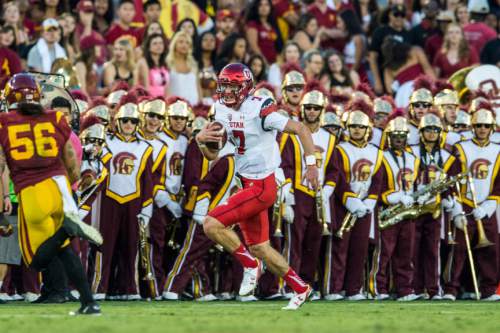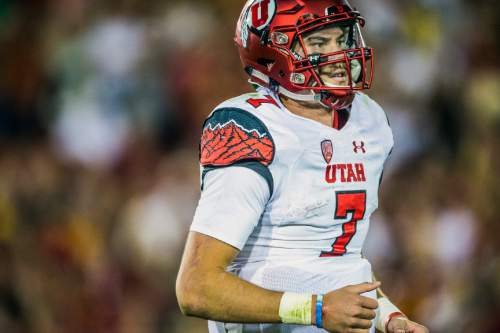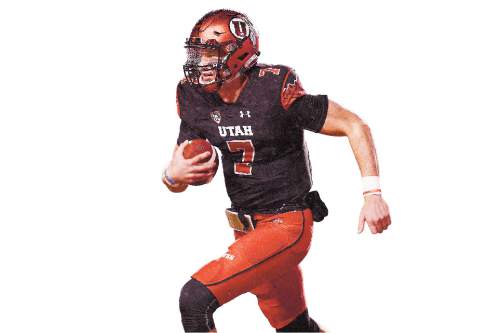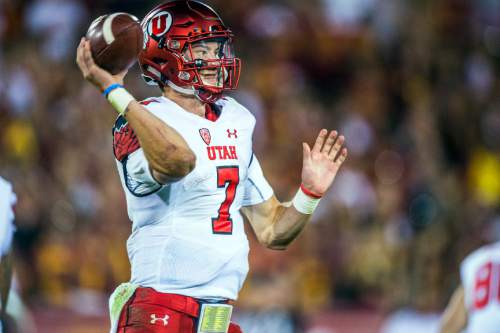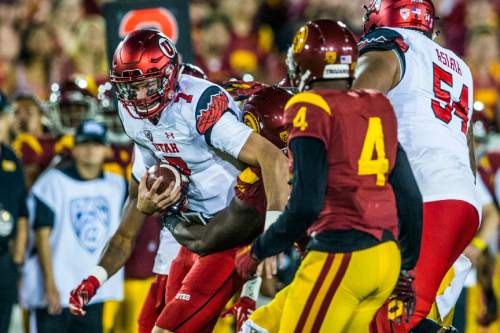This is an archived article that was published on sltrib.com in 2015, and information in the article may be outdated. It is provided only for personal research purposes and may not be reprinted.
In 2013, after Travis Wilson's steady play and sound decision-making were credited in an upset of No. 5 Stanford, he was said to have found a new comfort level — Utah, in turn, a new height.
In Wilson's next three games, hampered by a bite-shaped gash on his throwing hand for which he still bears the scar, he went 14 for 44 for 187 yards, three touchdowns and six interceptions.
Utah lost all three.
Then, in 2014, Wilson again looked poised through Utah's first three games, only to pass for less than 56.3 percent in his next five. His shoulders slumped as he walked off the field. At the first sign of inefficiency, he was pulled.
The circumstances both years make it hard to say definitively whether Wilson, in a vacuum, is prone to midseason slumps. But against an Oregon State defense that is still finding its way, Wilson has chance to nip any doubts in the bud.
Kyle Whittingham said Tuesday that he expects Wilson to rebound from a four-interception outing in the Los Angeles Coliseum and not be gun-shy.
Wilson has still completed a career-best 67.6 percent of his passes, surpassing the benchmark of 65 percent set by co-offensive coordinator Aaron Roderick. Two of his seven interceptions were Hail Marys. They hardly count.
But even if his struggles were brief — mostly limited to two second quarters — their effects were lasting.
Against Cal, Wilson threw interceptions three plays apart. Although Utah's defense limited the damage to three points, it might have doomed the Utes if not for a game-clinching pass deflection from cornerback Boobie Hobbs.
Against USC, linebacker Cameron Smith returned one pick for a touchdown and the other to the Utah 4. Utah's defense held for three downs, but not four. Later, Smith tipped and corralled a third Wilson pass.
Still, Oregon State coach Gary Andersen believes Wilson's maturation is one of the keys to Utah's 6-1 start.
"Some days are better than others, but that young man has played a lot of football, and he has done some special things for his team for many years," Andersen said.
Oregon State's pass defense is perhaps deceptively stingy, allowing 205 yards per game, but not frequently called upon given its difficulty stopping the run (197 yards per game) and the out-of-hand nature of many of its losses.
Run-averse Washington State totaled 409 yards through the air, and Logan High product Luke Falk had six touchdowns by halftime. Still, Wilson said he doesn't expect anything to come easy.
"They're going to be ready to play," he said. "I know their record doesn't really show it, but we're going to get their best game."
Defensive coordinator Kalani Sitake runs an odd-man front in Corvallis for the first time since 1996, though Sitake's preference is to one day return to the 4-3 he coached at the U.
"It's just the personnel that we have," Sitake said by phone Tuesday. "If I could find a Nate Orchard out there, that'd be great."
OSU also plays less man defense than Utah is known for, forced by youth to rely on zone coverage. The Beavers start sophomores or safeties at three of four secondary positions. Just two starters returned from 2014.
And while Utah has conceded eight sacks in the past two games, Oregon State has generated nine all season.
"It's not like we're not getting to the quarterback," said defensive line coach Chad Kauha'aha'a, who once held the same position at Utah. "It's about finishing. We're not closing. We're letting sacks get away."
But while Wilson may be verging on a deviation from his early-season steadiness, Oregon State's defense is on a marked uptick.
OSU has conceded 17 points in its last six quarters — since Falk's outrageous half — and Sitake believes the Beavers are starting to buy into changes that affect everything from the way they leverage or spill to the fundamentals of tackling.
"They've had years with the other staff," Sitake said. "It's not that [what we're teaching] is better than what the other staff did, it's just different from what they're used to doing."
It's tough, Sitake admits, coming from a place where everybody knows the drill. And that includes, in his opinion, Wilson. He's making checks at the line of scrimmage and managing his offense the way you'd expect from a fourth-year starter, Sitake said.
"It's going to be the best offense we've gone against all year. We've got to be ready to roll."
Twitter: @matthew_piper —
Oregon State at No 13 Utah
P Saturday, 5 p.m.
TV • Pac-12 —
Oregon State defensive rankings
Total defense • 402.3 yards per game, 73rd nationally
Rushing defense • 197.0, 96th
Passing defense • 205.3, 49th
Passing efficiency • 130.2, 76th
Scoring defense • 31.1 points, T-92nd
Turnover margin • 0.14 per game, T-62nd
3rd-down conversions • 39 percent, 67th
4th-down conversions • 43 percent, 45th
Red zone defense • 87 percent, 91st


